Let’s be honest—most of us fall into food routines. We cycle through familiar flavors, order the same dishes, and rarely stray beyond what we know. But hidden just outside the borders of mainstream cuisine is a world of dishes you’ve probably never heard of—and they’re absolutely worth discovering. These meals are cherished staples in their home countries, packed with rich history, bold ingredients, and unforgettable flavor combinations.
From a creamy seafood stew simmered in coconut milk along Brazil’s coast to a Botswanan porridge made with heirloom melon and sour milk, these dishes don’t just feed the stomach—they tell stories. They represent regional traditions, seasonal ingredients, and time-honored cooking methods passed down through generations. While they may be unfamiliar to you, they’re everyday comfort food somewhere else in the world.
Some are rustic and hearty, perfect for cold nights or communal feasts. Others are light, fragrant, and bursting with herbs and citrus. What they all have in common is a depth of flavor and cultural significance that can rival any five-star plate. And the best part? Many of them can be recreated at home with just a few fresh ingredients and a little culinary curiosity.
Whether you’re a seasoned foodie looking for your next kitchen experiment or a curious eater ready to explore new horizons, this list is your flavorful roadmap. These 15 dishes might not be on every menu—but they deserve a spot on your radar (and your plate). So if you’re hungry for something truly different, read on. It’s time to go beyond the basics and dig into some of the most delicious, under-the-radar dishes the world has to offer.
1. Romanesco Pasta
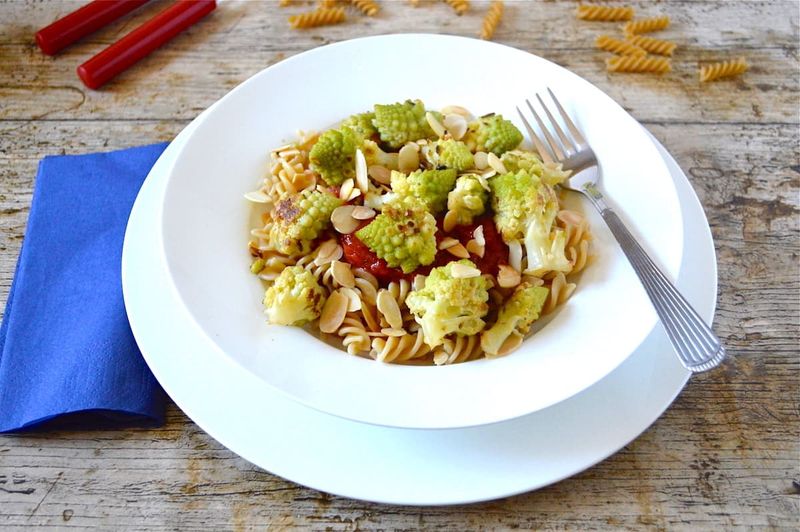
Italy’s Romanesco Pasta with Lemon and Parmesan is as stunning to behold as it is to eat. Built around Romanesco—the mesmerizing lime-green vegetable with spiral florets arranged in perfect Fibonacci patterns—this dish is a true celebration of both form and flavor.
Tossed gently with olive oil, garlic, lemon zest, and Parmesan, the Romanesco maintains its signature crunch and nutty, mild taste that falls somewhere between cauliflower and broccoli.
A hint of chili or anchovy can add depth, but the real star is the vegetable itself. First cultivated in Italy during the 16th century, Romanesco turns a simple pasta into a work of edible art.
2. Nasi Goreng
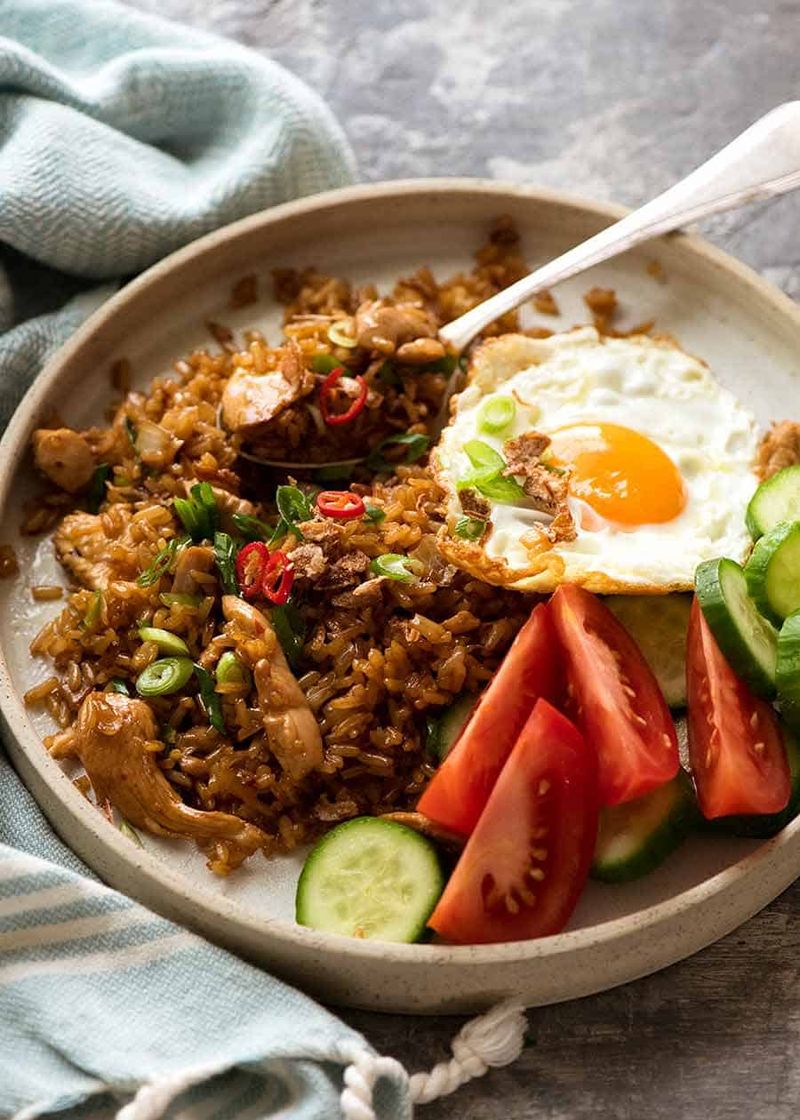
Breakfast, lunch, or dinner – Indonesians embrace this fragrant fried rice any time of day. The secret lies in kecap manis, a thick sweet soy sauce that caramelizes beautifully when hit with high heat.
Each spoonful delivers an explosion of garlic, shallots, and chili paste, often complemented by chicken, shrimp, or vegetables. The crowning glory? A perfectly fried egg with crispy edges and a runny yolk that creates an instant sauce when broken.
Street vendors across Jakarta cook this dish in well-seasoned woks that impart a distinctive smoky aroma called “wok hei” – the breath of the wok – impossible to replicate at home.
3. Pierogi
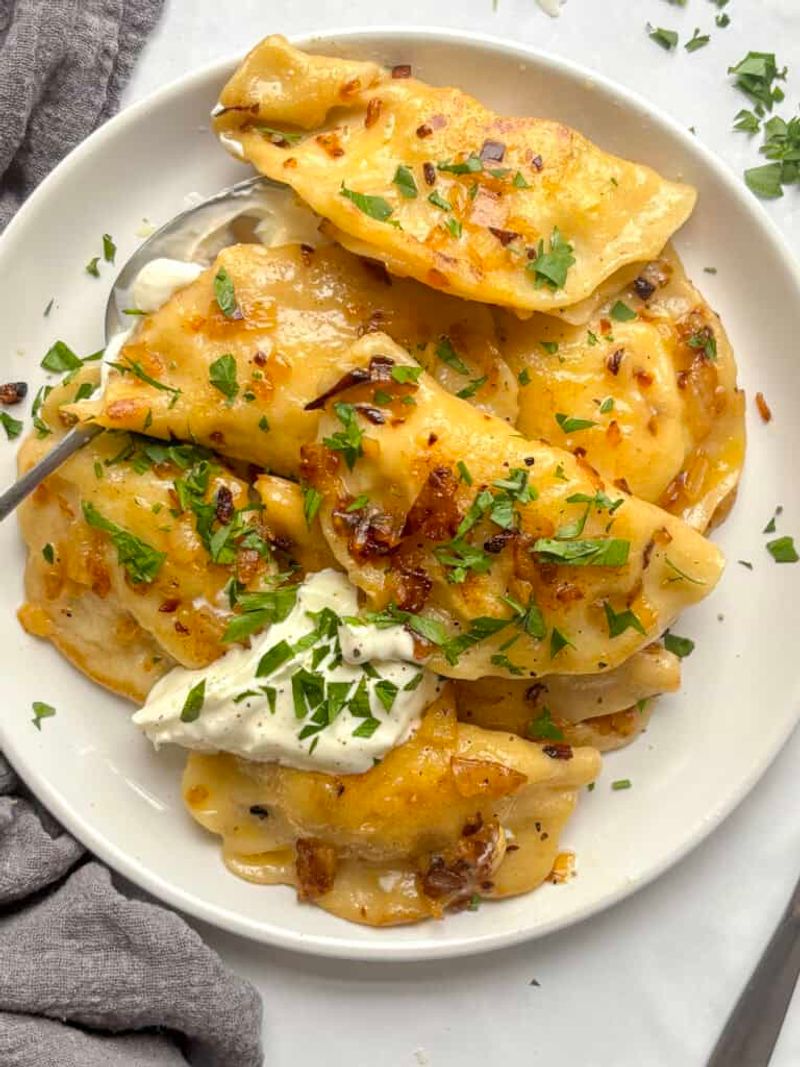
These half-moon dumplings have sustained Polish families through harsh winters for centuries. Imagine biting through a tender dough pocket to discover fillings ranging from savory potato and cheese to sweet blueberries.
Grandmothers across Poland guard their pierogi recipes like national treasures, each family claiming theirs is supreme. The traditional preparation involves boiling them until they float, then pan-frying for a contrasting crispy exterior.
During Christmas Eve celebrations, Poles serve mushroom and sauerkraut pierogi as part of their meatless Wigilia feast. The word “pierogi” is already plural – ordering “pierogis” will immediately identify you as a tourist!
4. Lefse

Norwegian grandmothers roll out these paper-thin potato flatbreads on special grooved boards using wooden grooved rolling pins – tools passed down through generations. The deceptively simple combination of riced potatoes, butter, cream, and flour creates a delicate canvas for sweet or savory toppings.
Traditionally enjoyed during Christmas season, lefse gets rolled with butter, cinnamon, and sugar – then folded into quarters like edible handkerchiefs. The potato base came about during hard times when wheat flour was scarce.
Making proper lefse requires specific equipment and technique; Norwegian-Americans in the Midwest still gather for community lefse-making parties to keep this heritage alive.
5. Golden Needle Mushrooms
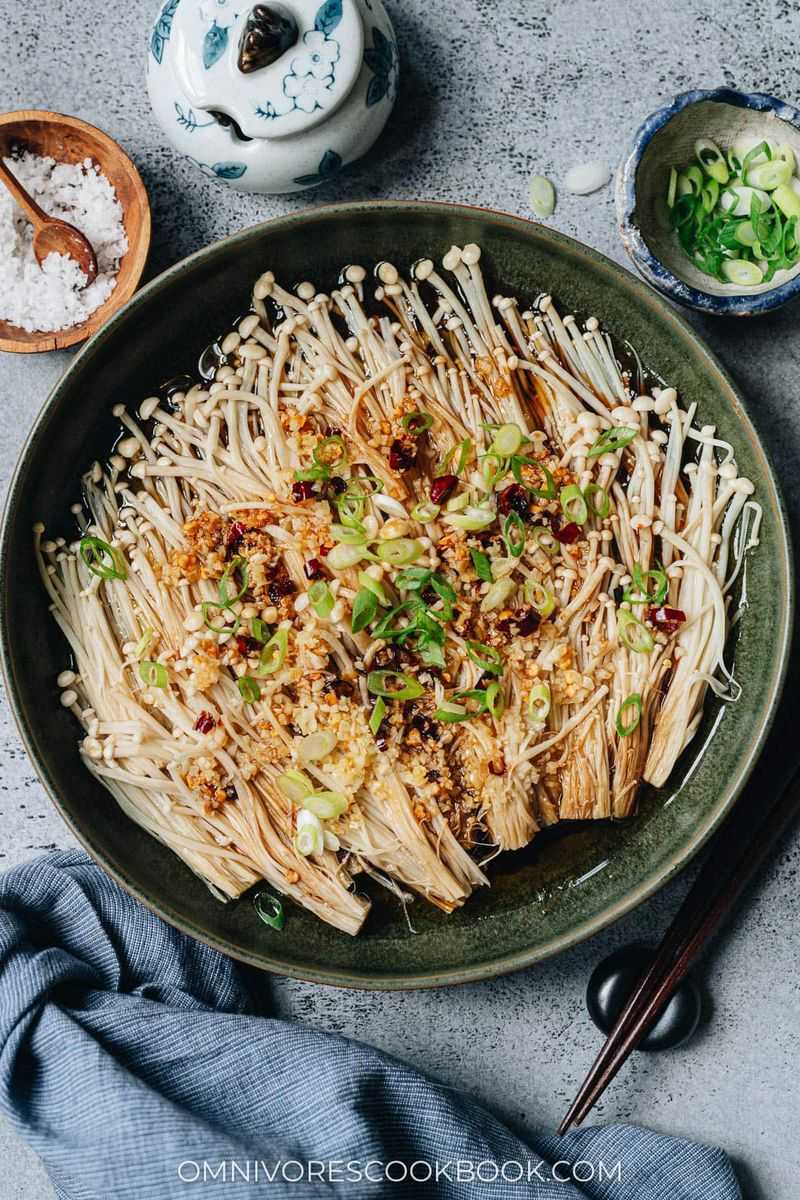
Long, slender, and snow-white, these mushrooms resemble tiny ivory needles clustered together like botanical sculptures. Known as enoki in Japan, these fungi grow naturally on Chinese hackberry trees but are commercially cultivated in dark bottles to maintain their pale color and delicate form.
Their mild flavor carries a subtle sweetness with a satisfying crunch that persists even after cooking. Japanese cooks add them to hot pots in the final minutes, while Korean chefs pickle them for tangy side dishes.
Rich in niacin, these mushrooms were used medicinally in ancient China long before becoming culinary stars. Simply trim off the woody base and separate the stems before adding to soups or stir-fries.
6. Waakye
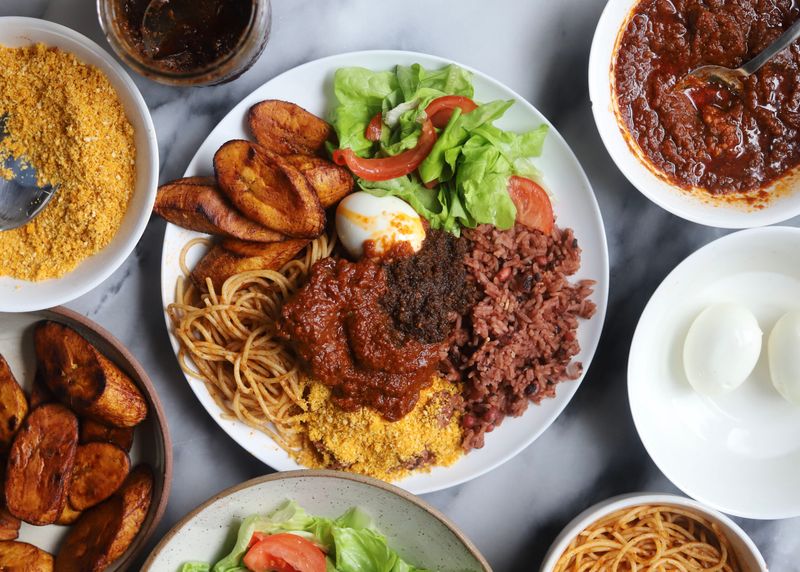
Pronounced “waa-chay,” this Ghanaian powerhouse meal brings together rice and beans cooked with dried sorghum leaves that give it a distinctive reddish-purple hue. The magic happens when these simple ingredients transform into something greater than their parts.
Traditionally served with a spread of sides including fried plantains, spaghetti, boiled eggs, and spicy pepper sauce. Street vendors across Ghana sell this morning staple wrapped in banana leaves.
The dish originated in northern Ghana but has become beloved nationwide as the ultimate comfort food that keeps you full for hours.
7. Osso Buco
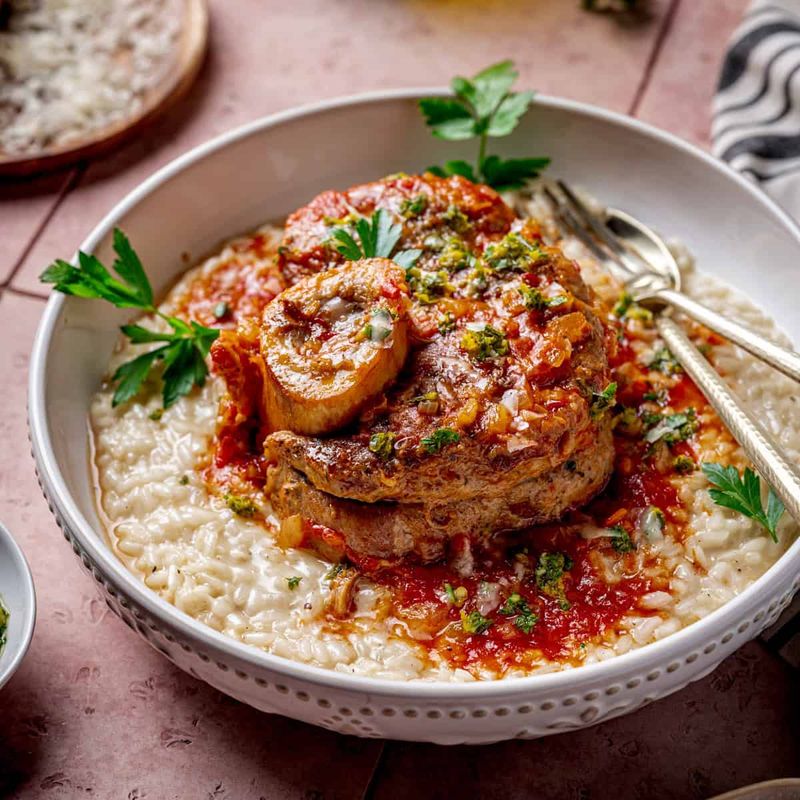
Milan’s most luxurious comfort food centers around cross-cut veal shanks slowly braised until the meat threatens to fall off the bone. The name literally means “bone with a hole” – referring to the marrow-filled center that becomes molten gold during cooking.
White wine, onions, carrots, and celery create a fragrant bath for the meat to simmer in for hours. The collagen-rich cuts break down into a silky sauce that clings to each forkful.
Traditionally served with gremolata (a zesty lemon-parsley-garlic condiment) and risotto alla milanese, this dish comes with a special long spoon designed specifically for extracting the prized marrow from the bone’s center.
8. Mangú
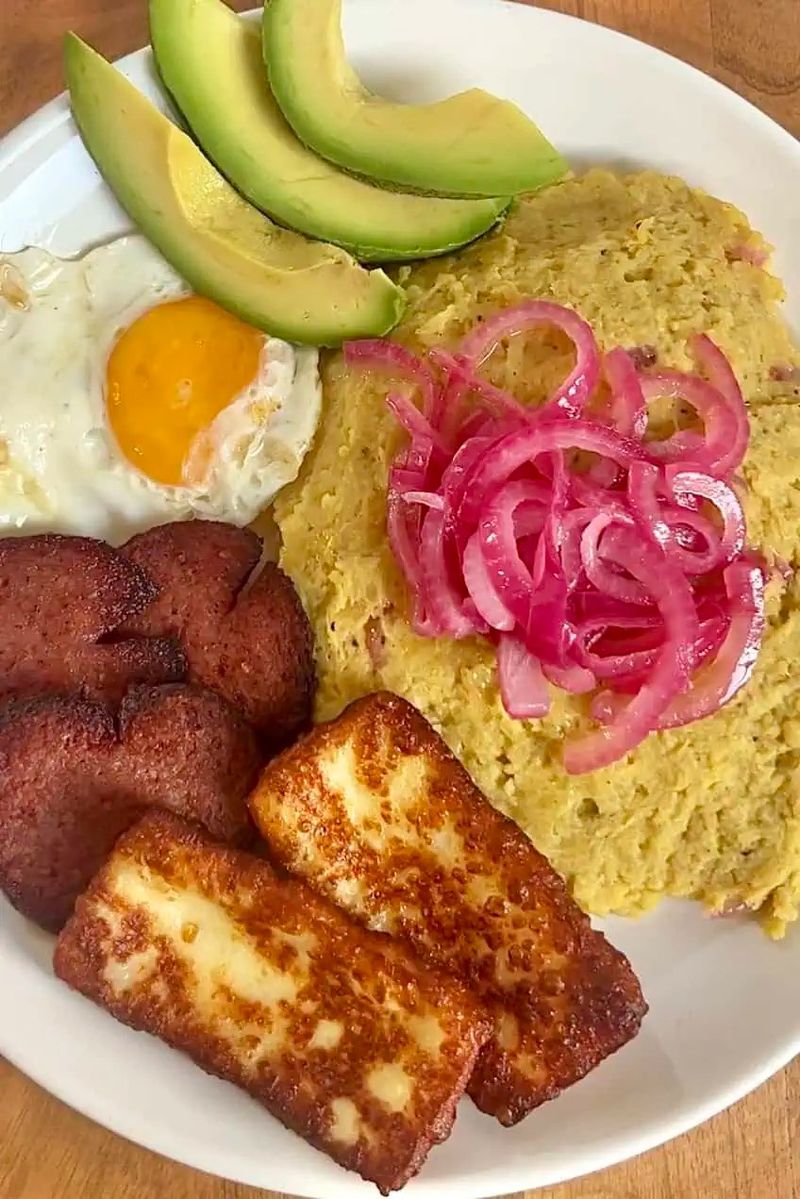
Morning energy in the Dominican Republic comes from this hearty dish of green plantains boiled and mashed into a smooth, starchy canvas. Unlike its sweet banana cousins, these plantains offer a subtle earthiness that pairs perfectly with the traditional toppings.
The complete experience, called “Los Tres Golpes” (The Three Hits), features the mangú crowned with pickled red onions and accompanied by fried cheese, salami, and eggs. A drizzle of olive oil keeps the mash from stiffening as it cools.
Legend claims the name came from an American soldier who tasted it and exclaimed “Man, good!” which locals heard as “mangú.” Every Dominican family has their technique for achieving the perfect creamy consistency.
9. Moqueca
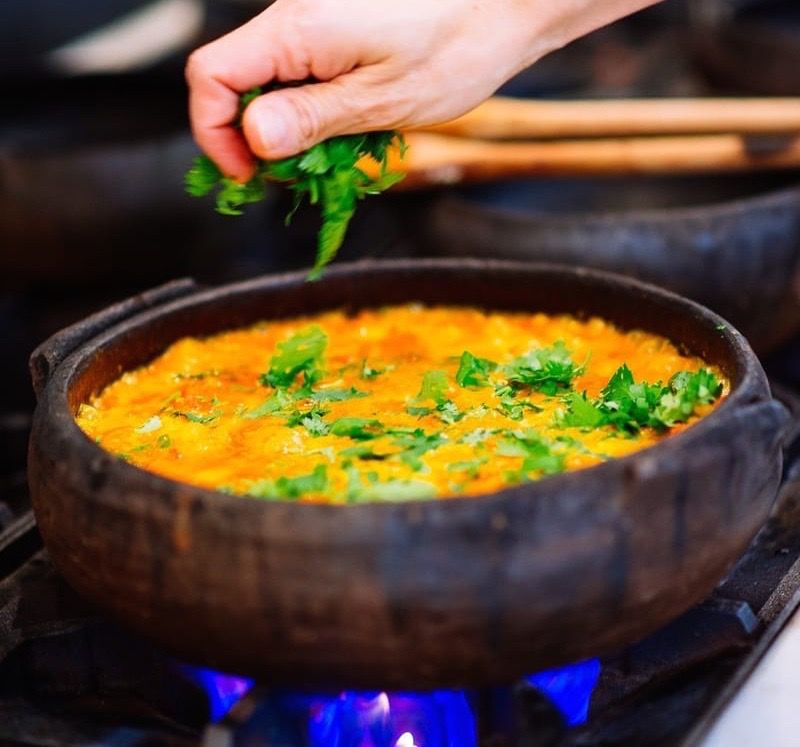
From Bahia’s sun-soaked coastline comes this vibrant seafood stew that captures Brazil’s cultural fusion in every spoonful. African, Portuguese, and indigenous influences converge in a clay pot where fresh fish and shellfish simmer in coconut milk infused with bright red palm oil (dendê).
Bell peppers, tomatoes, onions, and cilantro create a colorful base, while lime juice adds brightness to balance the richness. The traditional clay pot imparts an earthy flavor impossible to achieve in metal cookware.
Served over white rice with farofa (toasted cassava flour) on the side to soak up the fragrant broth. Fishermen’s families have prepared this dish for generations, each region claiming their version as the authentic original.
10. Bogobe jwa Lerotse
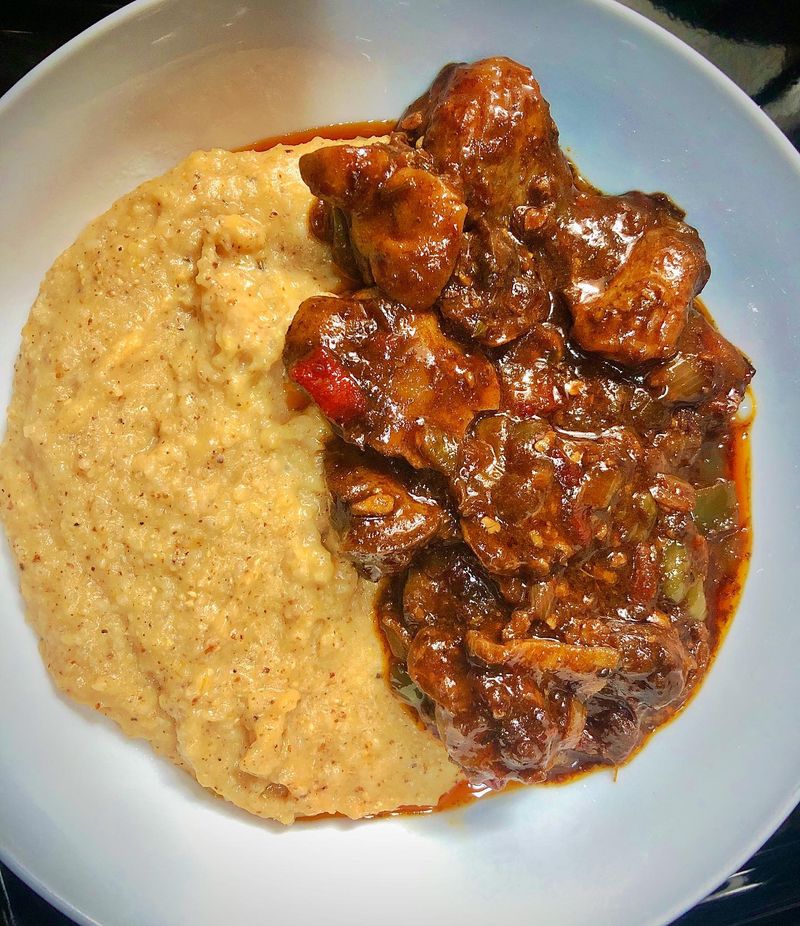
Across Botswana’s rural homesteads, families start their day with this uniquely fragrant porridge that transforms humble sorghum grain into something extraordinary. The secret ingredient? Indigenous lerotse melon, whose subtle sweetness and distinctive aroma infuse the entire dish.
Cooks combine ground sorghum with melon flesh and water, then slow-simmer until reaching a thick, smooth consistency. The finishing touch comes from madila (fermented milk) swirled in just before serving, adding tangy complexity.
During harvest festivals, communities gather to prepare this dish in large batches, celebrating the melons that flourish even in Botswana’s arid climate. Each spoonful connects diners to generations of agricultural tradition and indigenous food wisdom.
11. Shish Barak
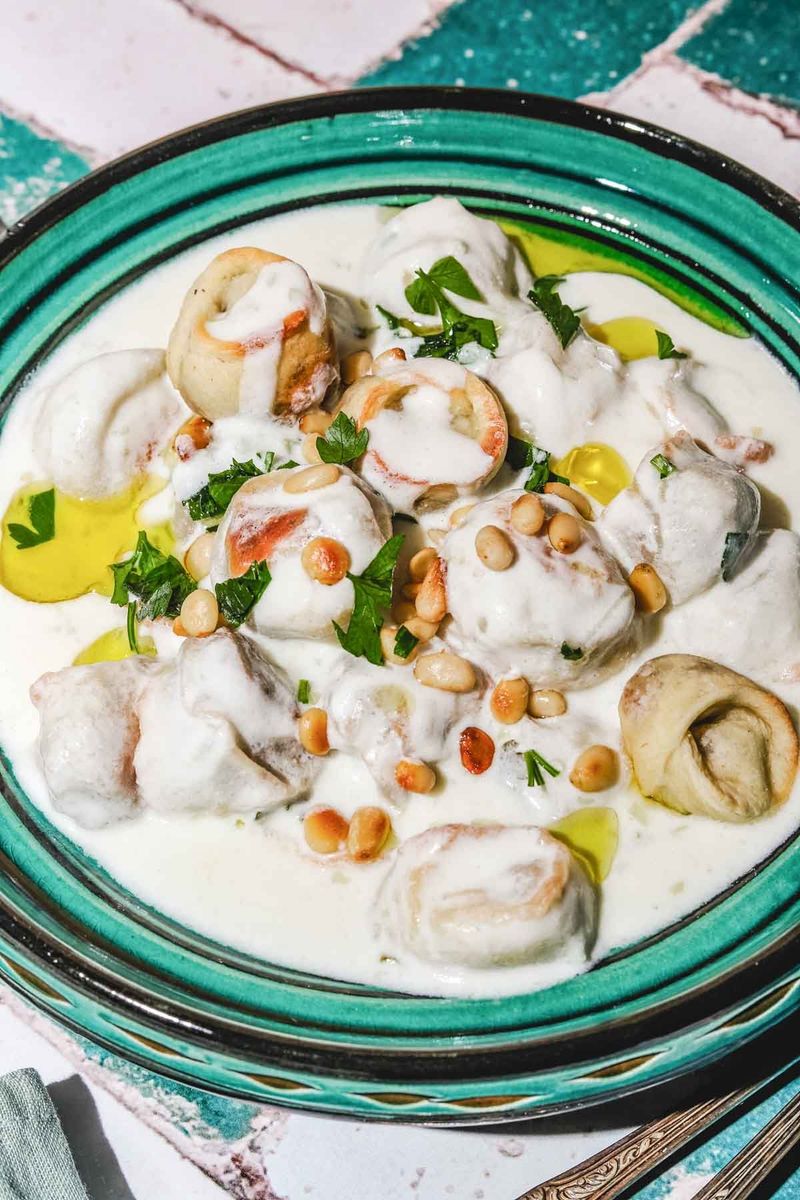
These crescent-shaped dumplings require patience but reward with incomparable flavor. Lebanese home cooks spend hours filling delicate dough with spiced lamb, pine nuts, and onions before pinching each closed into tiny packages no bigger than a thumb.
The magic happens when these dumplings meet their bath – a velvety yogurt sauce infused with garlic and dried mint, thickened slightly with rice flour. As they simmer, the dumplings release their savory essence into the tangy sauce.
Dating back to the Ottoman Empire, this dish appears at special celebrations where family members gather to prepare them together, assembly-line style. The yogurt’s probiotics made this dish practical before refrigeration, as the fermentation naturally preserved the meal.
12. Khachapuri

The national dish of Georgia combines two universal pleasures – bread and cheese – into an irresistible boat-shaped creation. Bakers form a yeasted dough into an oval vessel, then fill it with a mixture of brined sulguni and imeruli cheeses that melt into a bubbling pool.
Just before serving, a raw egg gets cracked into the center hollow, cooking gently from the residual heat. A finishing pat of butter melts into the molten mixture, creating a rich sauce for tearing and dipping the bread edges.
The Adjarian version (shaped like a boat) is most famous, but Georgia boasts at least nine regional variations. Tradition says you should eat it with your hands, tearing off the pointed ends first to dip into the cheese-egg mixture.
13. Lahmacun
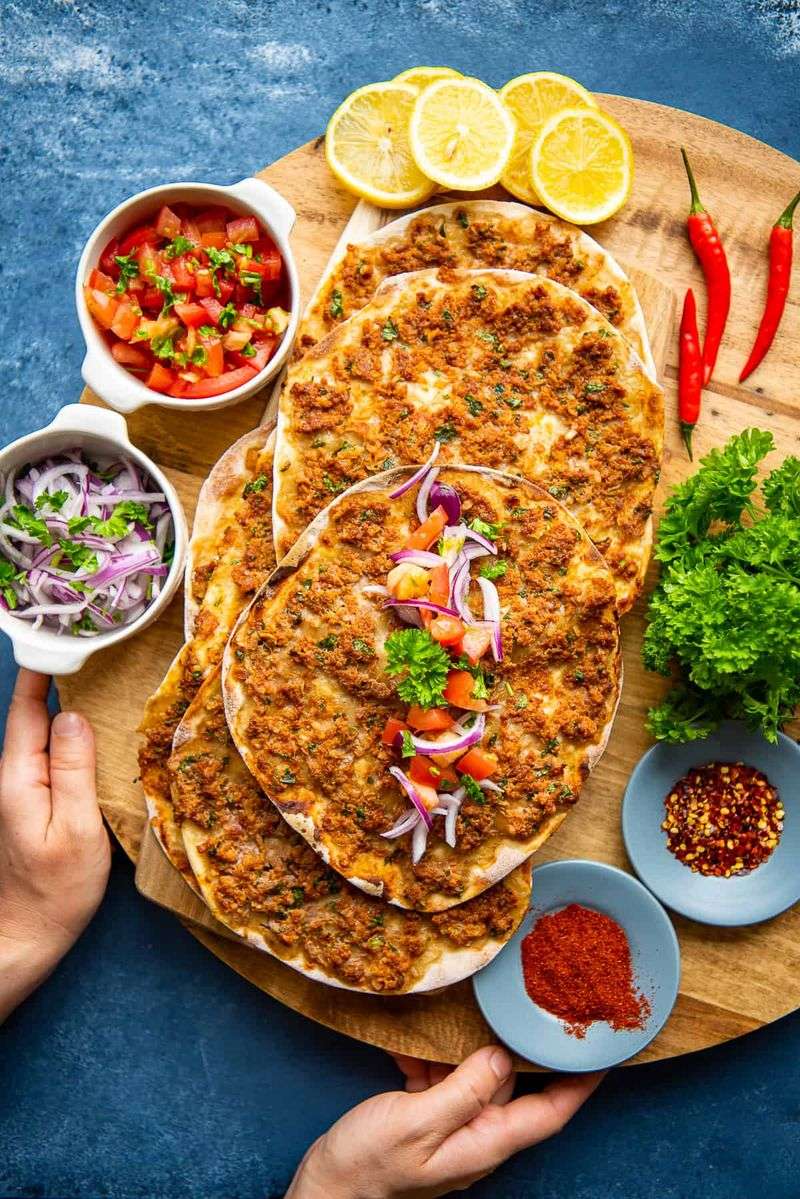
Often called “Turkish pizza,” this comparison hardly does justice to lahmacun’s distinctive character. Bakers roll dough paper-thin before topping it with a paste of minced lamb, tomatoes, peppers, and aromatic spices like sumac and Aleppo pepper.
The magic happens in wood-fired ovens where intense heat creates a cracker-crisp base while keeping the topping juicy. Street vendors across Turkey serve it rolled around fresh parsley, mint, and a squeeze of lemon that brightens the rich meat.
Dating back to ancient Assyrian times, this dish crosses borders throughout the Levant region. The name comes from Arabic: “lahm” (meat) and “ajin” (dough). True connoisseurs know it should be thin enough to fold without breaking.
14. Hallaca
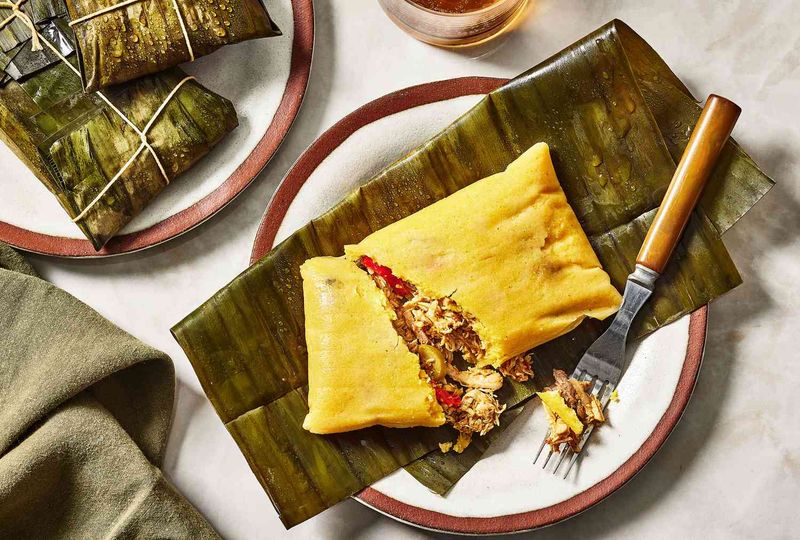
During December, Venezuelan kitchens transform into production lines as families gather to create these labor-intensive tamale-like parcels. Each hallaca wraps a complete feast inside a corn dough exterior colored golden-yellow with annatto seeds.
The filling showcases slow-cooked stew of beef, pork, and chicken seasoned with capers, raisins, olives, and bell peppers – a celebration of contrasting flavors. Cooks carefully wrap each one in banana leaves, tie them with string, and steam them to perfection.
Originally created by enslaved Africans who combined European ingredients with indigenous cooking techniques, hallacas evolved into Venezuela’s most treasured Christmas tradition. Families often make hundreds at once, sharing them as edible gifts throughout the holiday season.
15. Moambe Chicken
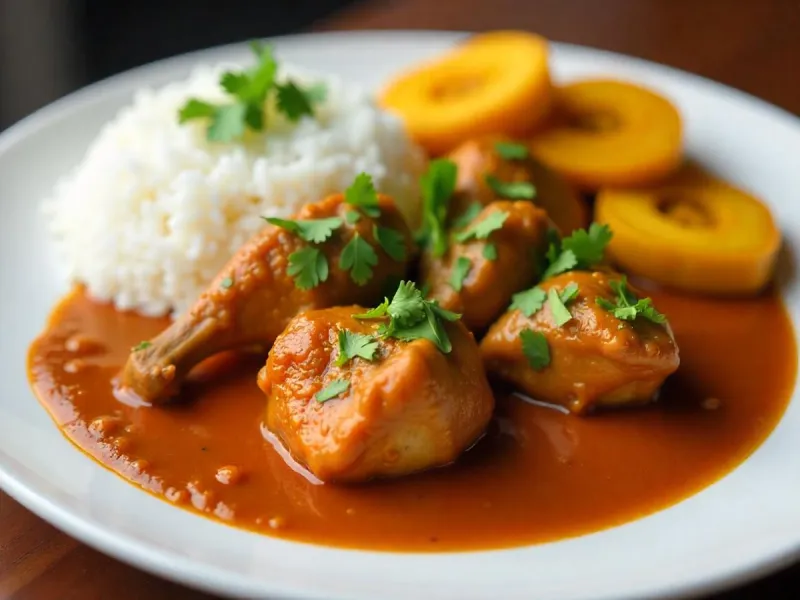
Considered the national dish across several Central African countries, this deeply satisfying stew centers around chicken slowly simmered in palm butter until fork-tender. The distinctive sauce gets its velvety texture and orange-red hue from the nutrient-rich oil extracted from palm nuts.
Garlic, hot chilies, and indigenous herbs create a complex flavor profile that’s simultaneously spicy, nutty, and savory. Congolese cooks traditionally serve it over fufu (pounded cassava) or rice that soaks up the rich sauce.
During Belgian colonial rule, European settlers encountered this dish and brought adapted versions back to Europe. Regional variations might include peanuts, okra, or different proteins, but the signature palm butter base remains constant across Central African cuisines.
Leave a comment